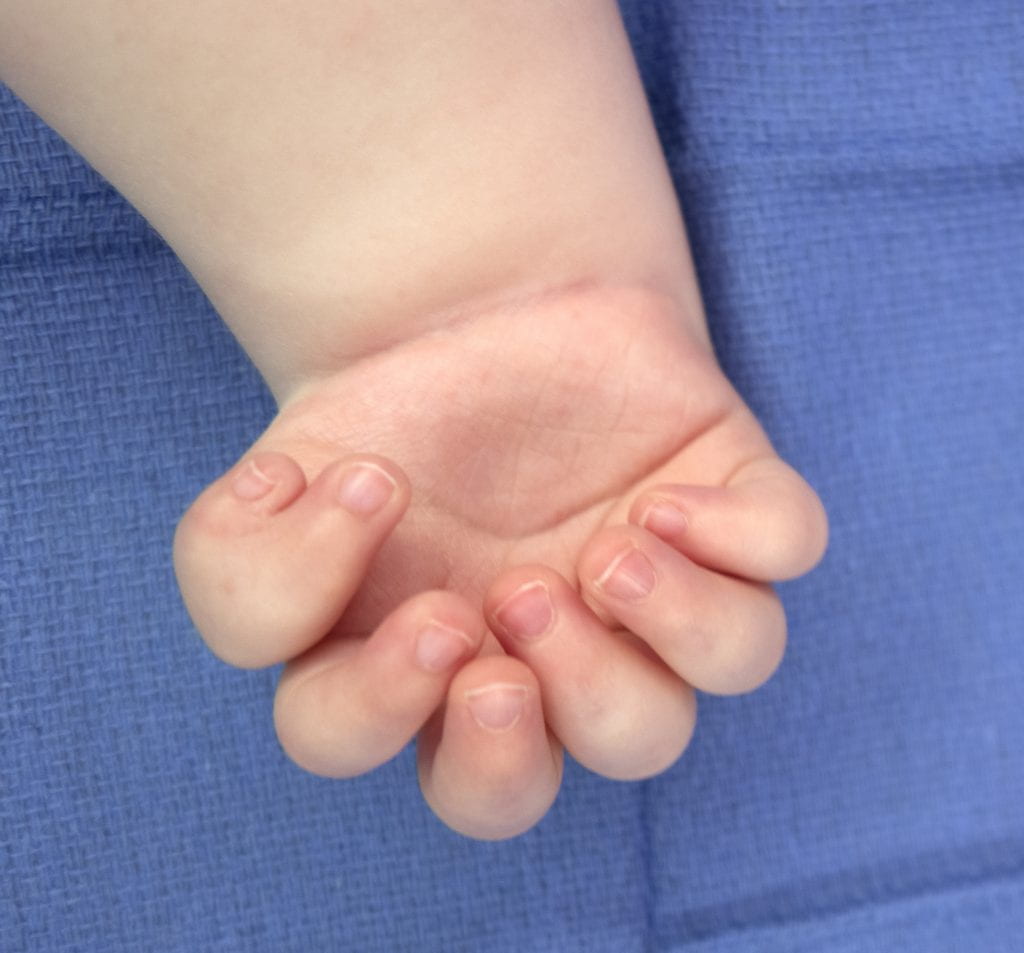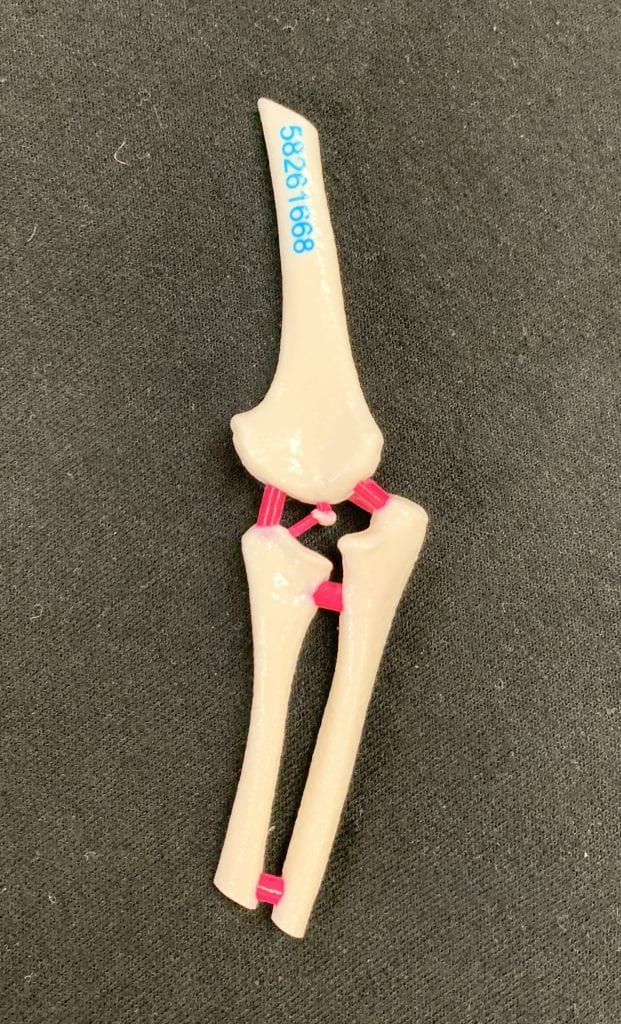Mirror hand, or ulnar dimelia as it is technically known, is one of the most striking birth differences of the upper extremity (there is also a lower extremity similar condition). There is a duplication of the ulnar half of the forearm and hand. This can present in the hand only (with a normal forearm) or can involve the elbow to the fingers. Patients may present with up to 10 fingers on the one hand and no thumb. The wrist is typically bent. Some fingers work well, some do not. Sometimes the elbow bends normally and other times it is held in a straight position. It is a remarkable presentation and yet, we understand how this happens based on limb development.
Cause
The cause of ulnar dimelia is well understood- a duplication of the ZPA (zone of polarizing activity) on the posterior (ulnar) part of the developing limb bud. This area is critical to the developing ulnar part of the forearm and hand- it produces a morphogen called sonic hedgehog which acts on the cells in that area as they develop. When that area is duplicated, then both sides of the developing forearm and hand develop the same- like a mirror image.
I have written previously about mirror hand several times Rebuilding the Mirror Hand, Understanding the ‘Why’ of Upper Extremity Birth Differences Part 1, and The Elbow in Birth Differences of the Upper Extremity. This post is meant to share my current philosophy on evaluation and treatment with a focus on the elbow.
Timing of Intervention
Reconstruction of the mirror hand typically is performed between 18 months and 24 months of age. This allows sufficient growth and development to occur (the hand doubles in size between birth and two years of age) without waiting “too” long for surgery. This is also the time we consider pollicization or creation of the thumb. The reconstruction of mirror hand is really about decision- making- finding the best finger to use as a thumb, removing the other digits, and utilizing as many muscles and tendons as possible.

It has been my preference to reconstruct the elbow earlier, for a few reasons. First, the elbow is typically straight which makes it difficult for the child to function and incorporate the arm. Second, I believe earlier surgery to improve anatomy can then be followed by remodeling of the elbow. The joint is primarily cartilage early in life and with some motion and with improved alignment, I believe the anatomy can become more and more normal. Therefore, I aim to reconstruct the elbow at one year or earlier if possible. As with the hand, the elbow is large enough to allow a delicate surgery to be done with precision but the child is young enough to benefit.
The Elbow
Mirror hand is very uncommon even for a busy congenital hand surgeon. And many patients with mirror hand are not affected at the elbow. Therefore, the experience of reconstructing the elbow is uncommon. We have been ‘fortunate’ to have a series of children needing the elbow (and hand) reconstruction and rely on some basic principles to help the reconstruction. First, however, is the benefit of technology. I have found 3D printing of anatomical models to be helpful in planning surgery. Here is one example.

The elbow anatomy is quite interesting and also can be very different from patient to patient (just like the hand). Typically, there is the radius/ radial head and the ulna/ olecranon. In ulnar dimelia, both ulna bones are rotated inward which means that reconstruction is much more complicated than removing one bone or the elbow portion of one bone. The bone blocks motion (bending) of the elbow.
It is possible to regain some motion with dedicated therapy from birth but, eventually, surgery is needed to maximize flexion (bending) of the elbow. The principle is to remove bone/ cartilage which blocks flexion and, in doing so, mold the radial sided bone into more of a radial head.
The soft tissues are more challenging and are not the focus of my initial surgery. Moving muscles/ tendons (tendon transfers) can be helpful but is something that I consider based on function. Importantly, after surgery, the main improvement is passive flexion (bending) with a successful initial result of 80-90 degrees of motion. Active motion (muscle powered motion) hopefully comes with time or with a later surgery.
The literature is quite limited on reconstruction of the elbow in ulnar dimelia. One technique article is helpful and can be found here.
Charles A. Goldfarb, MD
congenitalhand@wustl.edu